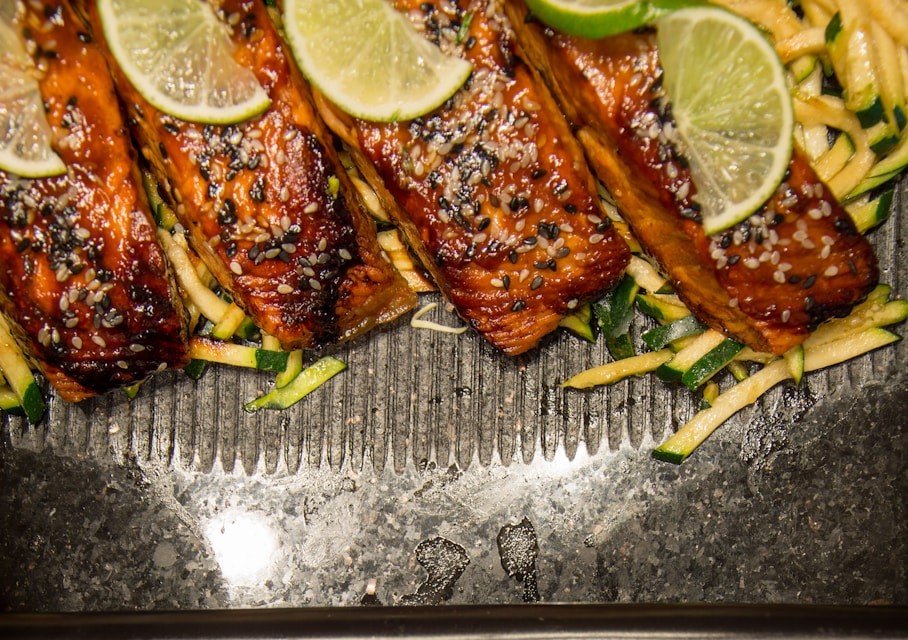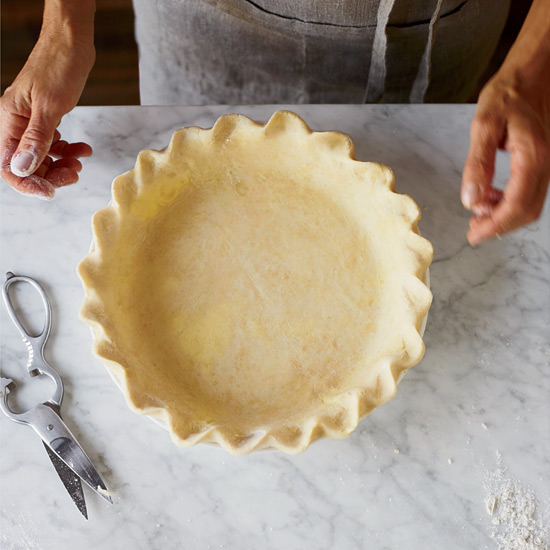Our Test Kitchen pros reveal the three best and four worst ways to cook salmon skin, then walk you through how to score that perfect sear.
As long as a fish has been raised in safe waters, is fresh or was frozen swiftly after it was caught, has been properly cleaned, and has had its outer scales removed, all types of fish skin should be safe to eat. That being said, some types of fish tend to have less tasty skin, including monkfish, skate, swordfish, and tuna, so the skin is almost always removed.
Considering the fact that salmon is the second most consumed seafood in the U.S. (only shrimp tops it), according to National Oceanic and Atmospheric Administration Fisheries, you might be wondering, can you eat salmon skin? Let’s dive in.
Can You Eat Salmon Skin?
According to Sarah Brekke, M.S., Better Homes & Gardens Test Kitchen brand manager, “yes, you can eat the skin. In fact it is very healthy!”
Just like salmon flesh, the skin is a good source of vitamins B and D, niacin, and phosphorus, the Alaskan Salmon Company confirms. And get this: Salmon skin is actually home to a higher concentration of heart-healthy omega-3 fats than the flesh.
Leaving the skin on also aids in keeping as much of the nutritious parts of the fish itself in the filet (rather than allowing it to seep out into the pan or grill.
Like all fish and seafood, salmon is affected by the water it swims in. If the water happens to be polluted, the salmon can absorb contaminants. Polychlorinated biphenyls (PCBs), mercury, and persistent organic pollutants (POPs) can all affect every living being.
Both farmed and wild salmon has been proven to contain fewer contaminants than many other types of fish and seafood, according to the Washington State Department of Health. The Environmental Defense Fund confirms that fish lower on the food chain often have the highest amount of mercury, POPs, and PCBs. (This includes American eel, striped bass, sturgeon, bluefin tuna, swordfish, and bluefish.)
If you’re unsure about if your fish was caught in clean waters and would like to play it safe, feel free to remove the skin – or ask your fishmonger to do so.
Our Test Kitchen team and many of our editors really enjoy salmon skin, due to its nutritional content and crisp-ability. Since the science stands behind the fact that salmon skin should be safe to eat, we almost always do. There’s a certain part that we really do prefer to remove, though: the scales.
“Salmon skin tends to have thinner scales that can be eaten when cooked. That being said, a knife or special fish scale removal tool can be used to gently scrape off any excess scales before cooking for a more enjoyable experience,” Brekke says. “We recommend you ask your fishmonger to remove the scales first,” or if they don’t, you can use a filet knife or descaling tool to shave them off yourself.
The No. 1 Secret For Better Salmon Skin
If you’re sticking with us and savoring the salmon skin, there is one essential step that we recommend, regardless of your specific salmon recipe.
“Make sure the skin is very dry by thoroughly patting it with paper towels before cooking,” Brekke says.
This will promote a good sear, which leads to that appetizing golden color and a crispier texture.
It’s also wise to select your cooking method accordingly if you are preparing skin-on salmon. According to Brekke, the best ways to cook skin-in salmon include:
- Searing
- Grilling
- Air-frying
The worst ways to cook skin-on salmon, because “you will encounter rubbery skin,” Brekke says:
- Steaming
- Smoking
- Microwaving
- Baking
How to Cook Skin-On Salmon
When cooking skin-on salmon, we suggest starting with the fish skin-side down. Follow these pointers to prepare it restaurant-style:
- Use high heat and a nonstick pan, well-seasoned cast iron skillet, or greased grill grates.
- Brush the salmon skin with a thin layer of a high smoke point fat (Brekke suggests avocado or vegetable oil or ghee) to promote more even cooking.
- Place the salmon, skin-side down, on the cooking surface. Season the flesh.
- Allow the skin to sear, undisturbed, for about 5 minutes until it crisps up and naturally releases from the pan or grates. (“If the skin is sticking to the pan, it needs a few more minutes. Be patient,” Brekke advises.)
- Only then, flip the filets, season the skin, and continue cooking until desired doneness.
According to the USDA, fish and shellfish should be cooked to a minimum internal temperature of 145° F, which you can measure with a meat thermometer. The internal temperature can rise about 5° to 15° F if you allow it to rest a bit, though, and some individuals prefer their salmon on the pinker side. We want to equip you so you can cook as your heart and food safety tolerance desires, so here’s the Alaskan Salmon Company’s temperature guide:
- Rare: 110° to 115° F (not advised for safety reasons)
- Medium rare: 115° to 120°F
- Medium: 120° to 125° F (when most cooks pull their salmon off the heat to allow it to rest)
- Medium well: 125° to 140° F
- Well done: 140° to 150° F
How to Cook Salmon Skin “Chips”
Some chefs like to remove the skin from salmon and cook it separately into a crunchy “chip” of sorts to use as a creative garnish or snack. Brekke walks us through how this is done:
- Using a thin, sharp knife carefully remove the skin from the flesh of the fish
- Cut the skin into 1-inch wide strips.
- Dry the salmon skin thoroughly between layers of paper towels.
- Place a large skillet over medium-high-heat, then coat the bottom of the pan with a thin layer of vegetable oil.
- Add the dry salmon skin pieces and allow them to cook, watching carefully and using tongs to flip and shift the pieces around as needed.
- Once a piece of salmon skin is crisp, remove that piece and allow it to drain on a paper towel-lined plate.
- Repeat with the following pieces as they crisp up.
- Season as desired, then serve.
This article was written by Karla Walsh from Better Homes and Gardens and was legally licensed through the DiveMarketplace by Industry Dive. Please direct all licensing questions to legal@industrydive.com.








